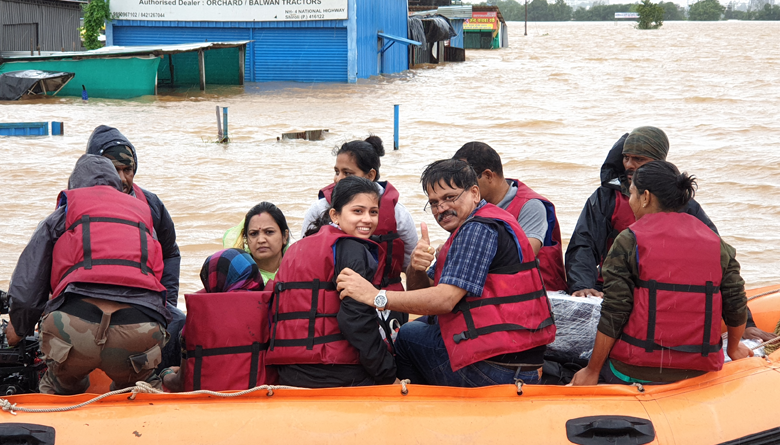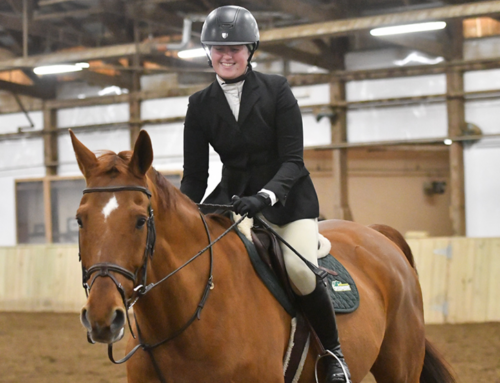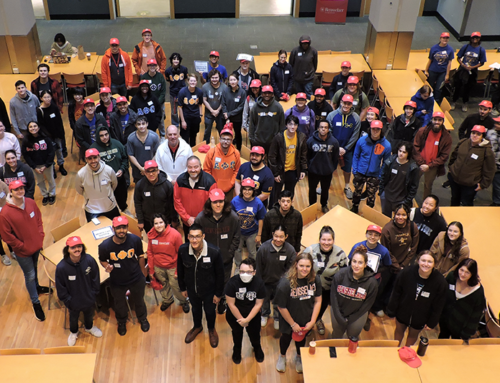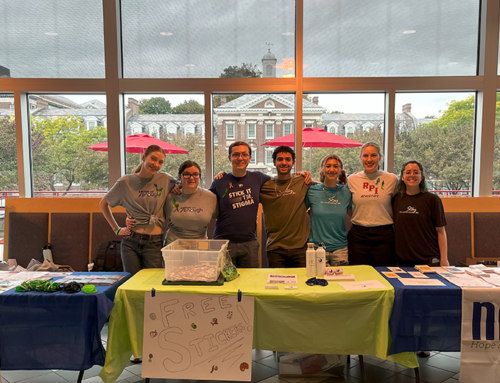By Shekhar Garde, dean of the Rensselaer School of Engineering
They say a picture is worth a thousand words. In this one, the first thing you notice is water—a lot of it— immersing trees and buildings, a blue and green shed, and whatever else came in its way. You also notice a raft with men in fatigues busy navigating it. You notice a woman who is lost in thought despite all the activity around her. And you certainly notice a young woman looking back, smiling, and a man, her father, holding her arm with one hand, and giving a thumbs up sign with the other, suggesting that all is going to be well!
Indeed, the journey ended well for the young woman, Mrunal Sontakke, who joined the Howard P. Isermann Department of Chemical and Biological Engineering at Rensselaer Polytechnic Institute last week as a new Ph.D. student and one of the Isermann Fellows.
Sontakke grew up in Kolhapur, India—a city of about half a million people known for its beautiful Mahalaxmi temple built in the 12th century, its fertile land, its manufacturing industry, and its generous people. Early August 2019 brought heavy rains to this region – 475mm to be exact, in just seven days (that is approximately 19 inches of rain!) – that shattered all historical records. The Panchaganga river that traces a semicircle around Kolhapur breached its banks flooding a significant part of the city, submerging homes, shops, and roads, isolating nearby villages, and displacing tens of thousands of people. The main highway, National Highway 4, that connects Kolhapur to Mumbai to the north and Bangalore to the south was nine feet under water at its lowest point. The Kolhapur airport was closed, too.
Having decided to join Rensselaer as a Ph.D. student, Sontakke was visiting her family in Kolhapur before her flight from Mumbai to JFK, which was starting to look like a remote possibility. She explored postponing her flights and inquired about delaying her joining the Ph.D. program, but also wondered if she could seek help from the good people at the National Disaster Response Force (NDRF), who she saw on the television news helping people across the flooded part of the highway. It turned out that the NDRF folks agreed with Sontakke about the importance of higher education, and were kind enough to give her and her dad a ride in one of the rescue rafts the next day (albeit after many hours of wait) so that she could catch a few more modes of transportation and make it to Troy, New York!
The end of August is always an exciting time here at Rensselaer. This year, we welcome students from 23 countries around the world, from 42 states in the U.S., each with their own story of how they got here (hopefully without a rescue raft!). We also welcome many brilliant new faculty members, whose journey to Rensselaer has stops in many countries, many institutions of higher learning, and with impressive accomplishments along the way. As the paths of these brilliant minds converge at Rensselaer, I look forward to the new ideas that will emerge, new discoveries that will be made, and new technologies that will be invented.
As for the city of Kolhapur, where I was born and spent my childhood, the floods are receding, generous help has arrived, and hundreds of volunteers are distributing food, clothes, and medicine. Much work remains to be done to clean up, to reestablish electricity and water to many tens of thousands, and to rebuild some 500 kilometers of washed-out roads. It is hard work, and it will continue for a while. But, in talking with my brother and my childhood friends who live there, it is clear that the spirit of optimism, generosity, and a sense of renewal is stronger than ever. You can see it on Sontakke’s face in the second picture above taken just after she made it across the flood. Welcome to Rensselaer!





